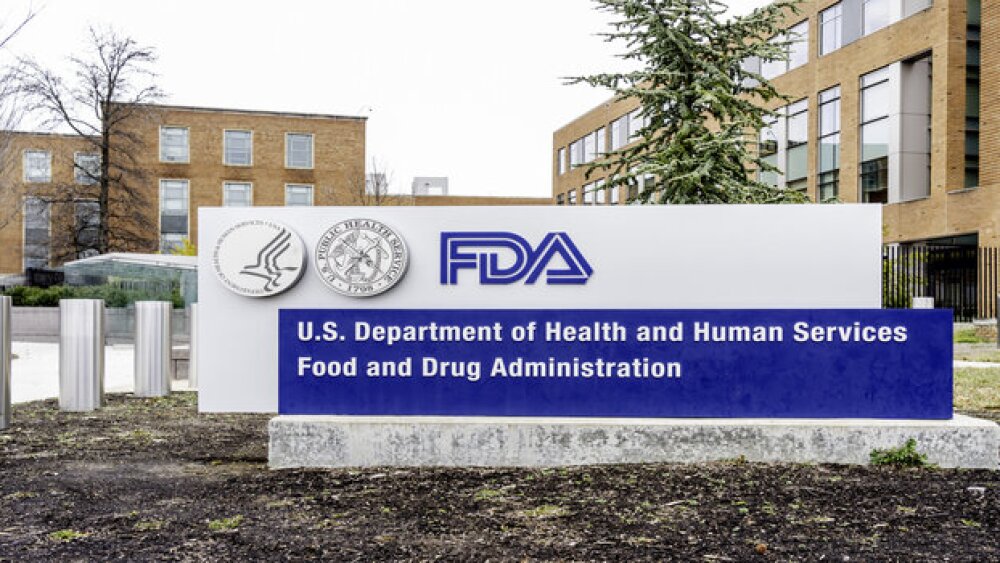BALTIMORE, MD – April 3, 2019 –Treatment with Ethicon’s** LINX Reflux Management System reduced medical costs more than laparoscopic Nissen fundoplication (LNF), a more invasive anti-reflux surgery, and more than offsets the slightly higher cost of the procedure, according to a new study presented here today at the 2019 Annual Meeting of the Society of American Gastrointestinal and Endoscopic Surgeons (SAGES 2019).
BALTIMORE, MD – April 3, 2019 –Treatment with Ethicon’s** LINX Reflux Management System reduced medical costs more than laparoscopic Nissen fundoplication (LNF), a more invasive anti-reflux surgery, and more than offsets the slightly higher cost of the procedure, according to a new study presented here today at the 2019 Annual Meeting of the Society of American Gastrointestinal and Endoscopic Surgeons (SAGES 2019). The research was partially funded by Ethicon, part of Johnson & Johnson Medical Devices Companies**, in collaboration with Highmark Health’s VITAL Innovation Platform, a test-and-learn environment for health innovations.
“The higher initial cost of a LINX procedure compared to a Nissen fundoplication is perceived as a drawback by insurers, which made getting insurance approvals challenging,” said lead researcher Blair Jobe^, MD, Director, Esophageal and Lung Institute at AHN. “This study suggests that perception may be short-sighted in that insurance plans can provide better care for their GERD patients at a similar cost to laparoscopic Nissen fundoplication when you factor in the greater reductions in medical costs after the procedure.”
The prospective observational study was performed at Highmark Health’s Allegheny Health Network (AHN), a health system serving western Pennsylvania, in conjunction with Highmark Inc., the region’s largest health insurance company. Researchers compared the total procedural cost and the disease-related and overall medical claim costs 12 months before and 12 months after a LINX procedure (180 patients) or LNF (1,131 patients).
The study found the mean PMPM (per member per month) medical reimbursement claims related to upper gastrointestinal (GI) disease one year after LINX dropped by 66 percent ($305 to $104) compared to 46 percent ($233 to $126) after LNF. Overall PMPM medical reimbursement claims decreased by 10.7 percent for LINX patients and only by 1.4 percent for LNF patients. Specific reimbursements for proton pump inhibitors (PPIs), acid suppression drugs for gastrointestinal reflux disease (GERD), dropped by 95 percent after LINX and by 90 percent after LNF.
The median cost of a LINX procedure was $13,522 (mean $14,379) and $13,388 (mean$13,691) for LNF, a difference that researchers say is offset or surpassed by a lower cost of care for the insurer in the one year following surgery.
LINX is a flexible ring of small magnets surgeons place around the lower part of the esophagus, the body’s natural barrier to reflux, during a minimally invasive procedure. The magnetic ring expands when a patient swallows to allow food to enter the stomach but then contracts to prevent stomach contents from flowing back into the esophagus and causing GERD, a condition that affects about 20 percent of people in the United States.[1] In LNF, a surgeon wraps a portion of the upper stomach (fundus) around the lower part of the esophagus to help prevent acid from moving up into the esophagus.
“This study demonstrated that the LINX System was cost effective and should be more widely covered by insurers,” said Tom O’Brien, President, Worldwide Endomechanical, Ethicon. “Ethicon will continue to help support studies that enable clinicians, patients, insurers and health systems to make the best possible decisions about which treatments work best for which patients and at what cost.”
Previous studies on LINX showed 88 percent of patients reported that bothersome heartburn had been eliminated five years after treatment,[2] 85 percent were free from dependence on daily reflux medication[3] and 99 percent of patients eliminated regurgitation,[4] a common symptom of GERD. Patients also report significant improvements in quality of life.[5]
About the LINX Reflux Management System
The LINX Reflux Management System is indicated for those patients diagnosed with GERD as defined by abnormal pH testing, and who are seeking an alternative to continuous acid suppression therapy. LINX requires a surgical procedure and is associated with potential risks, contraindications and life style modifications. For more information about LINX, or to find a physician, visit www.linxforlife.com.
LINX is manufactured by:
Torax® Medical, Inc.
4188 Lexington Avenue North
Shoreview, Minnesota 55126. USA
About Johnson & Johnson Medical Devices Companies
As the world’s most comprehensive medical devices business, we are building on a century of experience, merging science and technology, to shape the future of health and benefit even more people around the world. With our unparalleled breadth, depth and reach across surgery, orthopaedics, vision and interventional solutions, we’re working to profoundly change the way care is delivered. We are in this for life.
About Ethicon
From creating the first sutures, to revolutionizing surgery with minimally invasive procedures, Ethicon, part of Johnson & Johnson Medical Devices Companies, has made significant contributions to surgery for more than 60 years. Our continuing dedication to Shape the Future of Surgery is built on our commitment to help address the world’s most pressing healthcare issues, and improve and save more lives. Through Ethicon’s surgical technologies and solutions including sutures, staplers, energy devices, trocars and hemostats and our commitment to treat serious medical conditions like obesity and cancer worldwide, we deliver innovation to make a life-changing impact. Learn more at www.ethicon.com, and follow us on Twitter and LinkedIn.
Cautions Concerning Forward-Looking Statements
This press release contains "forward-looking statements" as defined in the Private Securities Litigation Reform Act of 1995 regarding the LINX Reflux Management System. The reader is cautioned not to rely on these forward-looking statements. These statements are based on current expectations of future events. If underlying assumptions prove inaccurate or known or unknown risks or uncertainties materialize, actual results could vary materially from the expectations and projections of Ethicon, Inc., any of the other Johnson & Johnson Medical Devices Companies and/or Johnson & Johnson. Risks and uncertainties include, but are not limited to: uncertainty of regulatory approvals; uncertainty of commercial success; challenges to patents; competition, including technological advances, new products and patents attained by competitors; manufacturing difficulties and delays; product efficacy or safety concerns resulting in product recalls or regulatory action; changes to applicable laws and regulations, including global health care reforms; changes in behavior and spending patterns of purchasers of health care products and services; and trends toward health care cost containment. A further list and descriptions of these risks, uncertainties and other factors can be found in Johnson & Johnson's Annual Report on Form 10-K for the fiscal year ended December 31, 2017, including in the sections captioned “Cautionary Note Regarding Forward-Looking Statements” and “Item 1A. Risk Factors,” and in the company’s most recently filed Quarterly Report on Form 10-Q, and the company’s subsequent filings with the Securities and Exchange Commission. Copies of these filings are available online at www.sec.govopen, www.jnj.
LINX® Reflux Management System Important Safety Information
The LINX® Reflux Management System is a laparoscopic, fundic-sparing anti-reflux procedure indicated for patients diagnosed with Gastroesophageal Reflux Disease (GERD) as defined by abnormal pH testing, and who are seeking an alternative to continuous acid suppression therapy (i.e. proton pump inhibitors or equivalent) in the management of their GERD.
Rx Only
Contraindications: Do not implant the LINX Reflux Management System in patients with suspected or known allergies to titanium, stainless steel, nickel, or ferrous materials.
Warnings: The LINX device is considered MR Conditional in a magnetic resonance imaging (MRI) system up to either 0.7 Tesla (0.7T) or 1.5 Tesla (1.5T), depending on the LINX model implanted. Scanning under different conditions may result in serious injury to you and/or interfere with the magnetic strength and the function of the device. In the event alternative diagnostic procedures cannot be used and MRI is required, the LINX device can be safely removed utilizing a laparoscopic technique that does not compromise the option for traditional anti-reflux procedures. It is recommended that patients receiving the LINX device register their implant with the MedicAlert Foundation (www.medicalert.org) or equivalent organization.
Failure to secure the LINX device properly may result in its subsequent displacement and necessitate a second operation.
Laparoscopic placement of the LINX device is major surgery and death can occur.
General Precautions: The LINX device is a long-term implant. Explant (removal) and replacement surgery may be indicated at any time. Management of adverse reactions may include explantation and/or replacement.
The use of the LINX device in patients with a hiatal hernia larger than 3 cm should include hiatal hernia repair to reduce the hernia to less than 3 cm. The LINX device has not been evaluated in patients with an unrepaired hiatal hernia greater than 3 cm.
The safety and effectiveness of the LINX device has not been evaluated in patients with Barrett's esophagus or Grade C or D (LA classification) esophagitis.
The safety and effectiveness of the LINX device has not been evaluated in patients with electrical implants such as pacemakers and defibrillators, or other metallic, abdominal implants.
The safety and effectiveness of the LINX Reflux Management System has not been established for the following conditions:
• Scleroderma
• Suspected or confirmed esophageal or gastric cancer
• Prior esophageal or gastric surgery or endoscopic intervention
• Distal esophageal motility less than 35 mmHg peristaltic amplitude on wet swallows or <70% (propulsive) peristaltic sequences or High Resolution Manometry equivalent, and/or a known motility disorder such as Achalasia, Nutcracker Esophagus, and Diffuse Esophageal Spasm or Hypertensive LES
• Symptoms of dysphagia more than once per week within the last 3 months
• Esophageal stricture or gross esophageal anatomic abnormalities (Schatzki’s ring, obstructive lesions, etc.)
• Esophageal or gastric varices
• Lactating, pregnant or plan to become pregnant
• Morbid obesity (BMI >35)
• Age < 21
Potential Side Effects: Potential adverse events associated with laparoscopic surgery and anesthesia include adverse reaction to anesthesia (headache, muscle pain, nausea), anaphylaxis (severe allergic reaction), cardiac arrest, death, diarrhea, fever, hypotension (low blood pressure), hypoxemia (low oxygen levels in the blood), infection, myocardial infarction, perforation, pneumonia, pulmonary embolism (blood clot in the lung), respiratory distress, and thrombophlebitis (blood clot). Other risks reported after anti-reflux surgery procedures include bloating, nausea, dysphagia (difficulty swallowing), odynophagia (painful swallowing), retching, and vomiting.
Potential risks associated specifically with the LINX Reflux Management System include achalasia (lower part of esophagus does not relax), bleeding, cough, death, decreased appetite, device erosion, device explant/re-operation, device failure, device migration (device does not appear to be at implant site), diarrhea, dyspepsia (indigestion), dysphagia (difficulty swallowing), early satiety (feeling full after eating a small amount of food), esophageal spasms, esophageal stricture, flatulence, food impaction, globus sensation (sensation of a lump in the throat), hiccups, inability to belch or vomit, increased belching, infection, impaired gastric motility, injury to the esophagus, spleen, or stomach, nausea, odynophagia (painful swallowing), organ damage caused by device migration, pain, peritonitis (inflammation of the peritoneum), pneumothorax (collapsed lung), regurgitation, saliva/mucus build-up, stomach bloating, ulcer, vomiting, weight loss, and worsening of preoperative symptoms (including but not limited to dysphagia or heartburn).
101161-181022 © Ethicon, US LLC 2018
###
*Ethicon represents the products and services of Ethicon, Inc., Ethicon Endo-Surgery, LLC and certain of their affiliates.
**Comprising the surgery, orthopaedics, vision and interventional businesses within the Johnson & Johnson’s Medical Devices segment
^Dr Blair Jobe is a consultant for Ethicon
______________________________
[2] Based on a 5 year prospective, multi-center, single-arm study observing 100 patients who were implanted with LINX, bothersome heartburn was 89% at baseline and decreased to 11.9% at 5 years. (p<0.001)
[3] Ganz R. Edmundowicz S, Taiganides
[4] Ganz R. Edmundowicz S, Taiganides
[5] Ganz R. Edmundowicz S, Taiganides




